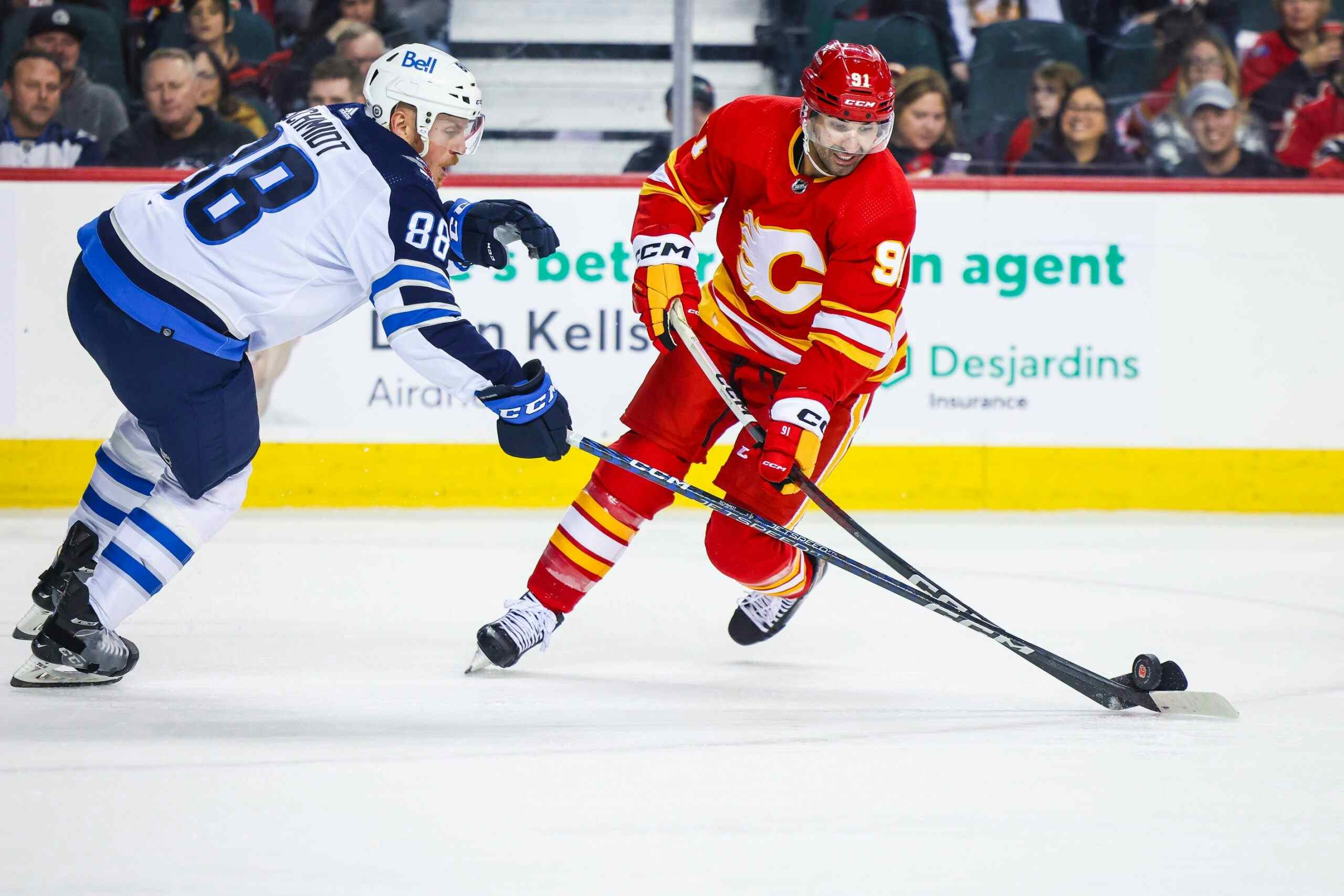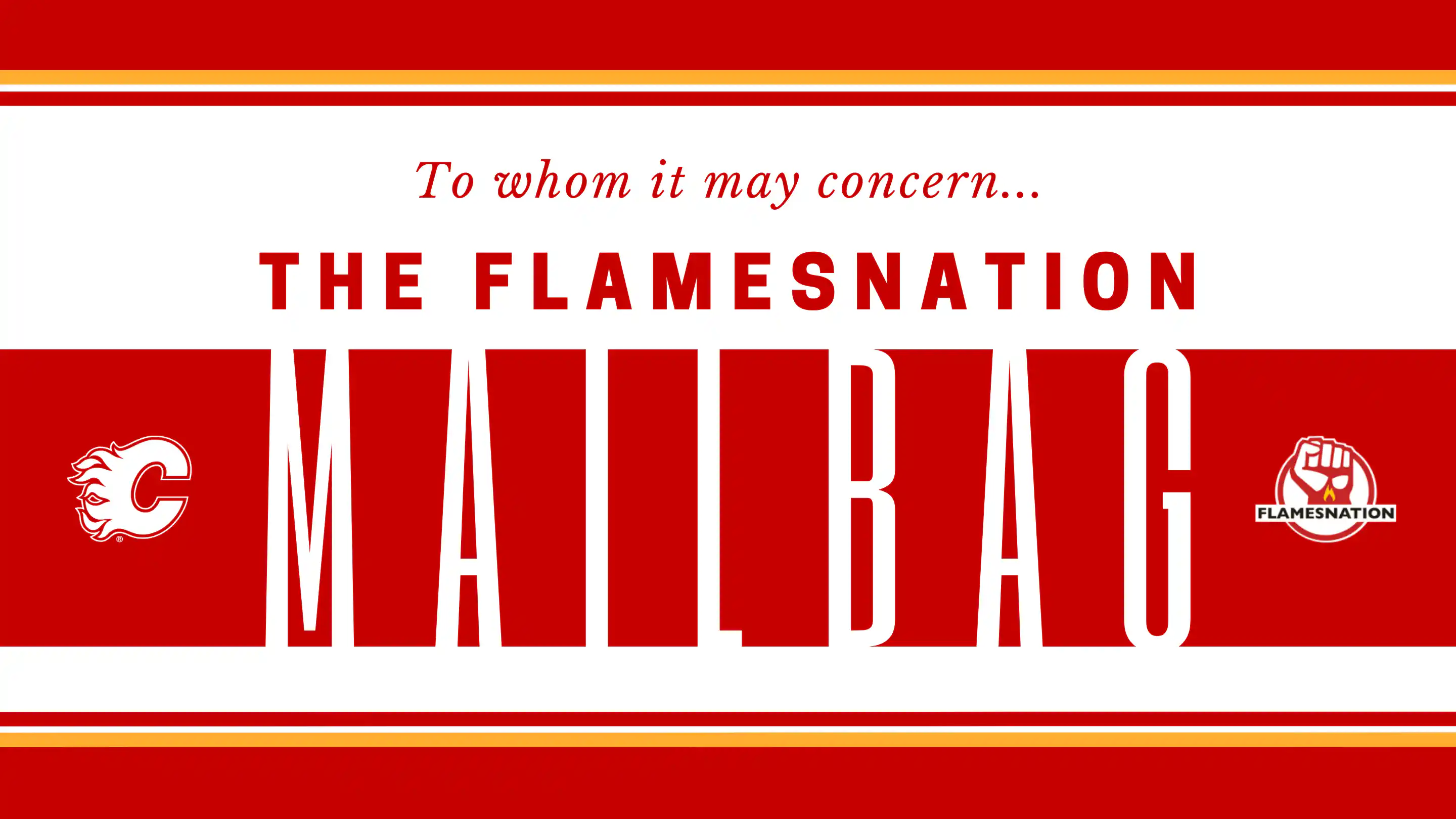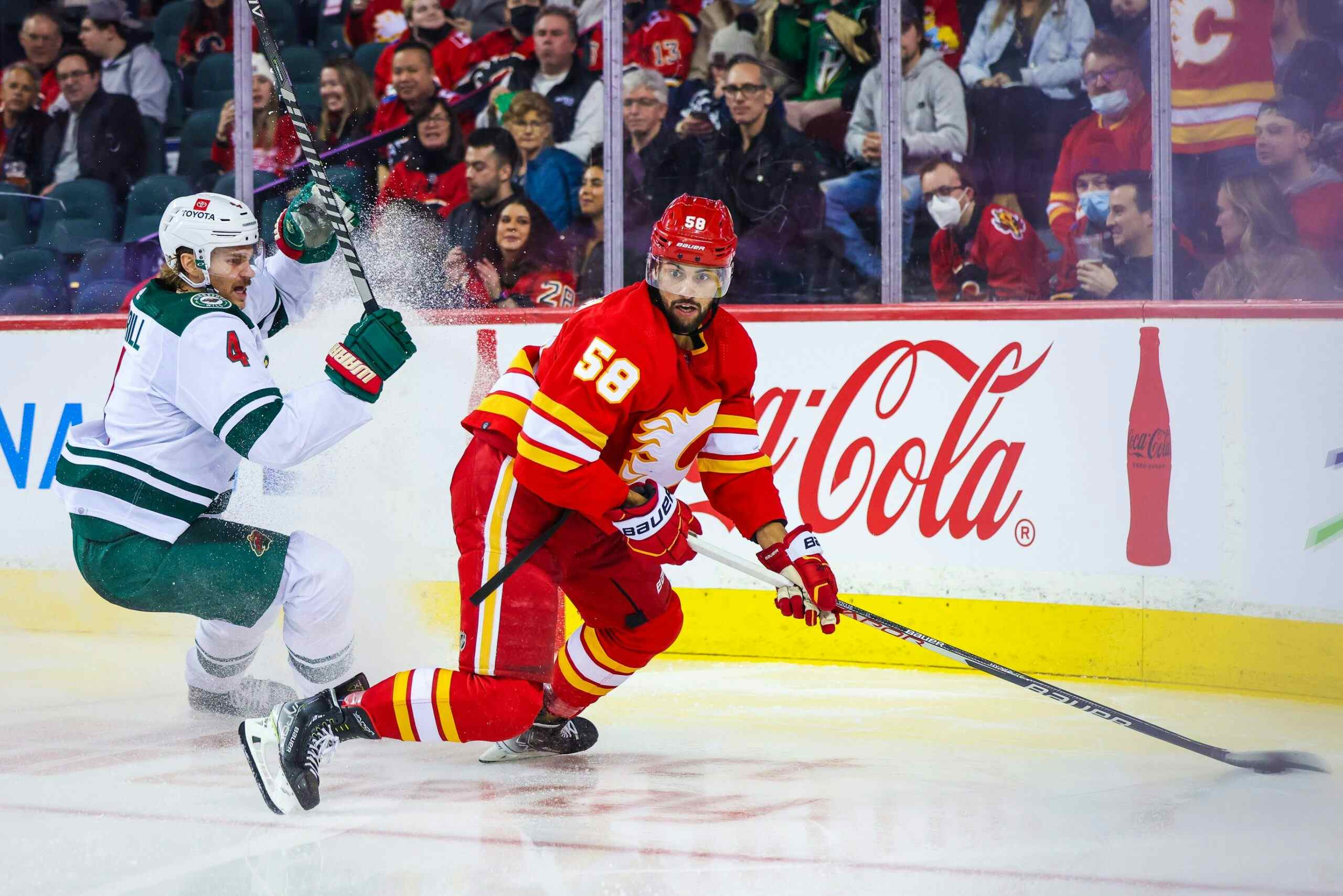The Flames should make a big change at forward, but it might not be in the cards
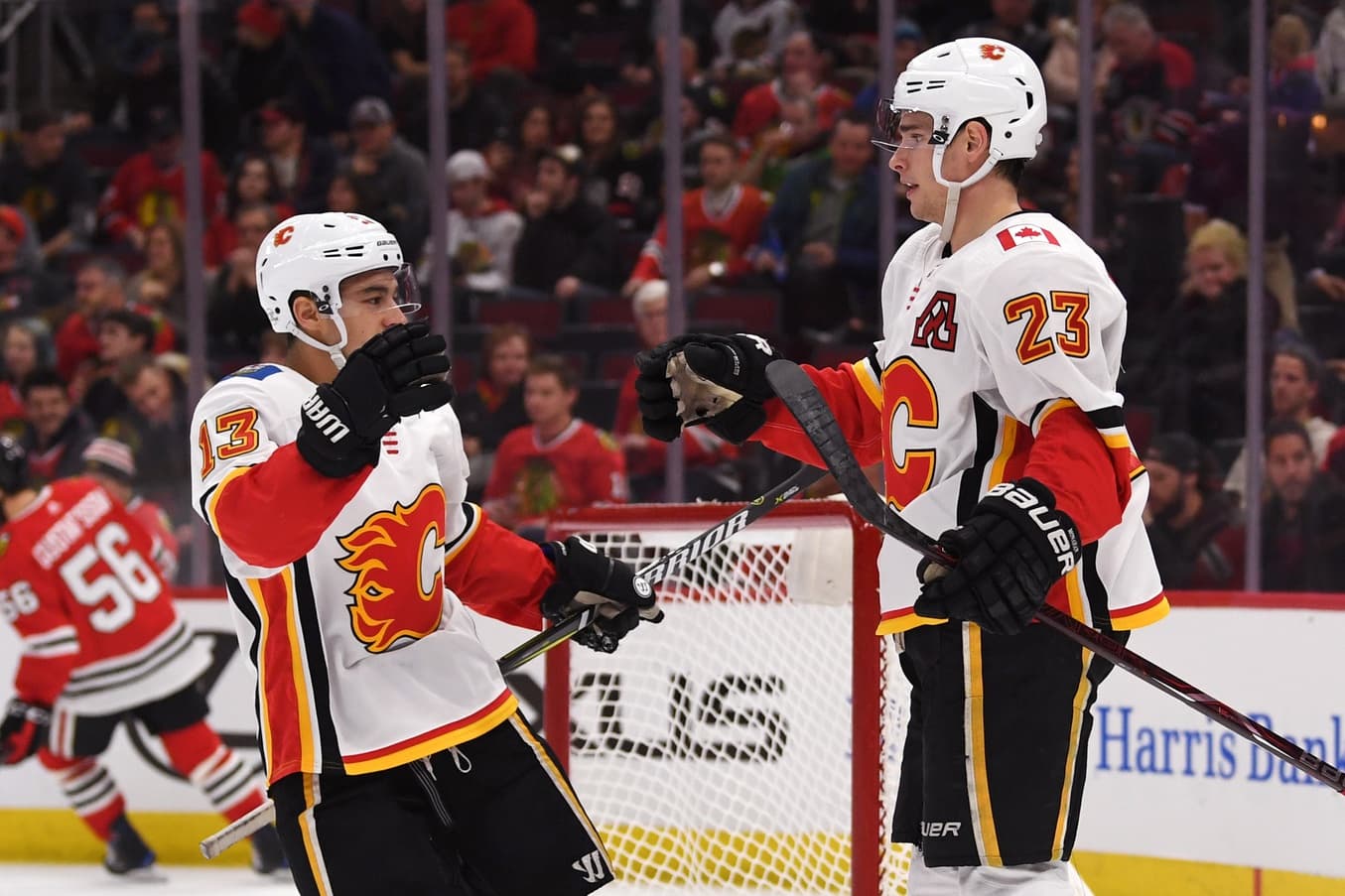
More than two weeks into free agency, the Flames have been busy. They’ve upgraded in net and overhauled the blueline, which is significant. One place we haven’t seen big change, though, is up front. Calgary has tinkered on the fringes, but as it stands right now, this core forward group is the same as it was to finish last season. It’s my belief the Flames should attempt to alter their core forwards, but if that isn’t in the cards, the team has to find a way to make the group tougher to match up against.
Why make a change?
Let’s be honest: when talking about making a change to a core forward, we’re mainly talking about Johnny Gaudreau and Sean Monahan. While dynamic and prolific regular season players, the disappearing acts we’ve seen the last two playoff years has become concerning. Attached at the hip, Monahan and Gaudreau have been ineffective at best in their last two trips to the playoffs, specifically at five-on-five. Underlying data courtesy Natural Stat Trick.
| Gaudreau | Monahan | ||||||
| Playoffs | CF% | HDCF% | OZS% | Playoffs | CF% | HDCF% | OZS% |
| 2017 | 54.0 | 56.0 | 74.4 | 2017 | 57.7 | 63.6 | 72.5 |
| 2019 | 50.6 | 35.5 | 53.6 | 2019 | 51.3 | 40.0 | 52.6 |
| 2020 | 44.0 | 37.5 | 50.0 | 2020 | 42.3 | 41.7 | 48.0 |
What we see above is troubling, because the last time either Monahan or Gaudreau truly drove possession in the playoffs was 2017 vs. Anaheim. They did that by being fed offensive zone starts (more on that later) and both were dangerous, albeit in just four games. But 2019 vs. Colorado and 2020 vs. Winnipeg and Dallas is not encouraging.
Not only have Monahan and Gaudreau been unable to produce at five-on-five, they’ve actually hurt the team. The Flames can’t have two of their three highest paid forwards bleed high quality scoring chances like they have in their last two playoff trips. Because of their offensive upside, Monahan and Gaudreau play big even strength minutes, so giving up chances like they have just isn’t conducive to winning when it matters most.
Of course, no one expects either guy to be Selke Trophy frontrunners. Calgary counts on this duo to score, and when they are, it’s much easier to overlook defensive shortcomings. But when they’re not and they’re coughing up ten-bell chances left and right, it’s a recipe for losing a playoff series. In the team’s last two postseasons, neither Gaudreau nor Monahan have consistently produced at five-on-five.
| Player | GP | G/60 | A/60 | P/60 |
| Sean Monahan | 15 | 0.29 | 0.29 | 0.57 |
| Johnny Gaudreau | 15 | 0.00 | 0.28 | 0.28 |
In 216:30 of even strength ice time in 2019 and 2020, Gaudreau has one secondary assist. 16 Flames players have been more productive in that same stretch of time. Monahan’s only slightly better; he’s at one goal and one secondary assist in 210:01 of five-on-five ice time. Yes, both players have put up powerplay points, but you’re not paying either Monahan or Gaudreau to be specialists.
Because recent postseason returns have been highly disappointing, the question has been raised: can Calgary get over in the playoffs with these two driving the bus? While the story isn’t completely written, it’s not an unfair suggestion. That’s why I believe a deal that would shake up this core group of forwards is something this team has been exploring, and rightfully so.
The problem is, it might not be in the cards this offseason. The league is in an unprecedented holding pattern with a flat salary cap for the foreseeable future. The type of “hockey deal” I’m talking about requires both teams to move out an important piece, which means significant dollars involved on at least one side. Yes, general manager Brad Treliving could find a fit that works, but I would suggest it’s far from a guarantee.
Making the best of status quo
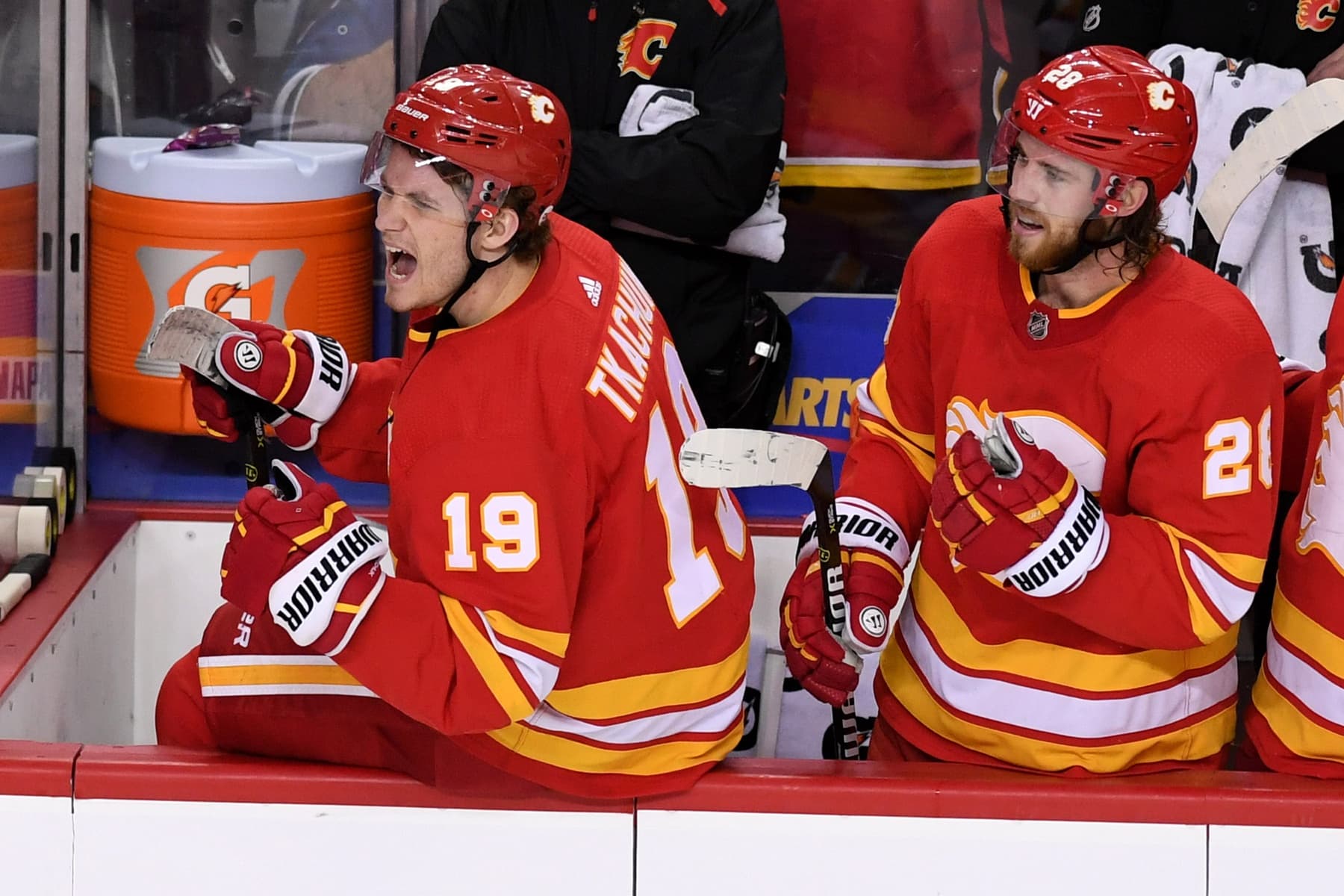
So maybe the climate isn’t favourable to a move involving a core forward and the Flames come back with the same group. Well, that doesn’t mean head coach Geoff Ward has to roll things out the same way we’ve seen the last few years. I believe there are combinations available to Calgary right now that could make them more difficult to match up against than the last look we saw with everyone healthy.
Gaudreau-Monahan-Lindholm
Mangiapane-Backlund-Tkachuk
Lucic-Bennett-Dube
Jankowski-Ryan-Rieder
Mangiapane-Backlund-Tkachuk
Lucic-Bennett-Dube
Jankowski-Ryan-Rieder
The problem with the above lines is it allows opposing coaches to pick and choose how they want to play the Monahan line. Colorado’s Jared Bednar happily deployed Nathan MacKinnon head-to-head whenever he could in 2019. This past summer, Rick Bowness went with a different approach; Monahan mostly saw Comeau, Faksa, Cogliano, and Pavelski in six games against the Stars. In both cases, Calgary’s top line lost.
That’s why I’ve been in favour of a rethink in how the Flames deploy their forwards. Instead of forcing players to be what they’re not, play to their strengths. Monahan and Gaudreau are high end offensive talents, so put them in a spot to succeed, away from big shutdown and defensive responsibility. Here’s one example I brought up Monday night on Flamesnation Live:
Mangiapane-Lindholm-Tkachuk
Gaudreau-Monahan-Dube
Bennett-Backlund-Leivo
Lucic-Ryan-Nordstrom
Gaudreau-Monahan-Dube
Bennett-Backlund-Leivo
Lucic-Ryan-Nordstrom
I believe Lindholm is a very good NHL centre who can produce five-on-five while taking on the responsibility that goes along with being the “number one”. He did that for 26 games last season between December and February and had 20 points in that span while posting impressive underlying outputs. I think a line with Lindholm, Tkachuk, and Mangiapane could take on the toughest head-to-head matchups and produce like a top line.
Backlund, as we know, is as good as two-way centre we’ve seen in Calgary since Craig Conroy’s best years. Pairing him with newly signed Leivo, another analytics darling with a proven ability to play both ways, is intriguing. With Backlund and Ryan’s lines being used in defensive roles and Lindholm’s as the top matchup unit, the door is wide open for Monahan, Gaudreau, and whoever is on their right side.
Essentially, that line would become the team’s “top scoring line” and used as such. Gaudreau and Monahan would still be mainstays on the number one power play unit. At even strength, they’d get offensive high ground (think an OZS north of 75%) and far easier head-to-head matchups.
I still believe we’re talking about a very good offensive duo, so play to their strengths and put them in the best possible spot to rack up points. The Vancouver Canucks used a similar approach in the early 2010’s with the Sedins and it paid off huge. And, look how effective Monahan and Gaudreau were being used the same way in the 2017 playoffs. It’s something to consider.
Can I guarantee this rethought strategy will ultimately be successful? No, of course not. But I do know what we’ve see from Monahan and Gaudreau hasn’t worked in the playoffs. In fact, it probably hasn’t worked at a high level since the first half of 2018-19. If a big change to this forward group isn’t coming, a different approach to how they’re put together needs to be heavily considered.
Recent articles from Pat Steinberg

